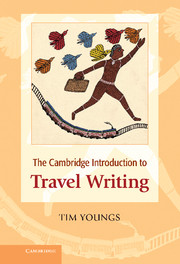Chapter 1 - Introduction
Defining the terms
Published online by Cambridge University Press: 05 May 2013
Summary
a genre in which I don’t believe.
Jonathan RabanWhat is travel writing?
Travel writing, one may argue, is the most socially important of all literary genres. It records our temporal and spatial progress. It throws light on how we define ourselves and on how we identify others. Its construction of our sense of ‘me’ and ‘you’, ‘us’ and ‘them’, operates on individual and national levels and in the realms of psychology, society and economics. The processes of affiliation and differentiation at play within it can work to forge alliances, precipitate crises and provoke wars. Travelling is something we all do, on different scales, in one form or another. We all have stories of travel and they are of more than personal consequence.
Travel narratives, both oral and written, have been around for millennia. Yet their longevity has made it no easier for critics to agree on how to define or classify them. No discussion of travel writing seems complete without critics remarking on the difficulty of determining their object of study. Carl Thompson remarks that the term ‘encompasses a bewildering diversity of forms, modes and itineraries’. For Patrick Holland and Graham Huggan, the genre is ‘notoriously refractory to definition’. Michael Kowaleski refers to its ‘dauntingly heterogeneous character’, and notes that it ‘borrows freely from the memoir, journalism, letters, guidebooks, confessional narrative, and, most important, fiction’. Charles Forsdick describes ‘the generic indeterminacy of the travelogue, a literary form situated somewhere between scientific observation and fiction, while simultaneously problematizing any clear-cut distinction of those two poles’. Barbara Korte finds that ‘the travelogue is a genre not easily demarcated’. This is in part because, ‘As far as its theme and content matter are concerned, the travel account has not emerged as a genre hermetically sealed off from other kinds of writing.’ Jonathan Raban, in a comment quoted so often that any discussion of the character of travel writing seems incomplete without it, suggests that, ‘As a literary form, travel writing is a notoriously raffish open house where very different genres are likely to end up in the same bed. It accommodates the private diary, the essay, the short story, the prose poem, the rough note and polished table talk with indiscriminate hospitality.’
- Type
- Chapter
- Information
- The Cambridge Introduction to Travel Writing , pp. 1 - 16Publisher: Cambridge University PressPrint publication year: 2013
- 1
- Cited by



